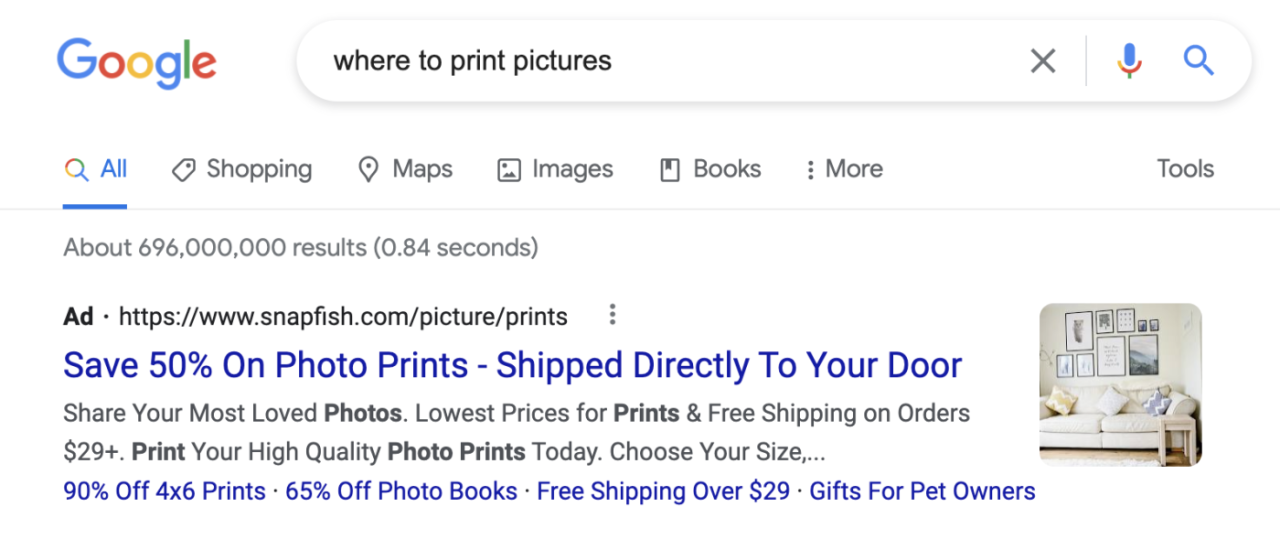Digital advertising platforms. Contextual ads. Behavioral ads
Digital advertising platforms for dropshipping
Welcome to the exciting (not-so-scary as most newcomers think) world of digital advertising for dropshipping. There’s plenty of platforms to use, but not all of them are effective, that’s why here we’ve gathered only the best-working ones. Let’s dive in!
1. Google ads:
Google Ads is one of the most prominent platforms for dropshippers. It provides both search and display advertising.
- Search Ads: Appear on Google search results. They are perfect if you want to capture potential customers actively searching for products you offer.

- Display Ads: Visual ads that appear on various websites that are part of Google’s Display Network. They’re excellent for creating brand awareness.
- Google Shopping Ads: offer retailers different options for getting their products in front of the right customers. They can include a product image, title, and price, plus your store or business name, all right in the ad. Merchant Center creates these based on information you include in your product feed so you don’t need to create the ads yourself.

2. TikTok ads:
With the surge of users on TikTok, it’s no wonder that the platform has become a hotspot for advertisers.
- In-feed Video Ads: These are short video ads that appear on the user’s “For You” page.

- Brand Takeover: It’s a full-screen ad that appears when a user first opens the app.

- TopView Ads: Like the brand takeover, but with a delayed play.

TikTok’s audience is young and engaging, making it a great platform for trendy dropshipping products.
3. Facebook ads (or Meta):
Facebook Ads can’t be overlooked, despite some criticisms.
- Pros: Massive user base, detailed targeting options, variety of ad formats (carousel, video, slideshow, etc.)
- Cons: One of the major critiques of Facebook Ads is its ever-changing interface. For beginners, it can be frustrating to get acquainted with the platform, only to find that features or navigation change frequently.
This continuous flux can present challenges in terms of consistent and efficient campaign management.
However, with patience, Facebook’s extensive user data can yield significant results for dropshippers.
4. Twitter and Pinterest
Despite the common thinking these two can work wonders when it comes to your promotion.
Advertising on Twitter is generally fast-paced and real-time, focusing on trending topics and quick engagement. It’s a good platform for reaching a younger, tech-savvy audience. Ads often come in the form of promoted tweets that look like regular tweets but are labeled as sponsored.
Pinterest advertising is more visual and longer-lasting, aimed at people actively searching for inspiration or planning projects. It’s particularly strong in areas like fashion, home decor, and recipes. Ads are usually Pins that blend in with regular content but are marked as “Promoted.”
5. Contextual vs. behavioral ads:
Let’s delve into the difference between these two.
- Contextual Ads: These are ads displayed based on the content of a web page. For instance, if someone is reading an article about hiking boots, they might see an ad for camping gear. Google Display Network is popular for this.

- Behavioral Ads: These target users based on their past browsing behavior, interests, and other activities. For example, if someone was browsing an online shoe store but didn’t make a purchase, they might see ads for that store later on. Facebook and Instagram Ads often use this approach.

6. The Importance of Reach:
Reach is a crucial metric in ad analytics. It represents the total number of people who saw your ad. While having a broad reach is essential for brand awareness, it’s equally important to ensure that your reach is to the right audience.
Platforms like Facebook offer granular targeting, ensuring your ad dollars are spent effectively.
7. Platforms and ad types:
Different platforms excel for various types of ads:
- Google Search is ideal for ads that target specific search queries – a form of contextual advertising.
- Facebook and Instagram are potent platforms for behavioral ads because of their in-depth user data.
- TikTok is a blend, where you can target based on content and user behavior. Given its video-centric nature, it’s best suited for engaging video ads.
As you can see, the landscape of digital advertising is vast and varied. For dropshippers, the challenge lies in understanding which platforms and ad types align best with their target audience and products.
While navigating platforms like Facebook can occasionally be frustrating due to its shifting interface, the potential rewards in terms of reach and conversion can’t be denied.
By mastering the art of contextual and behavioral advertising, you can ensure that your products find their way to the right audience, at the right time.

